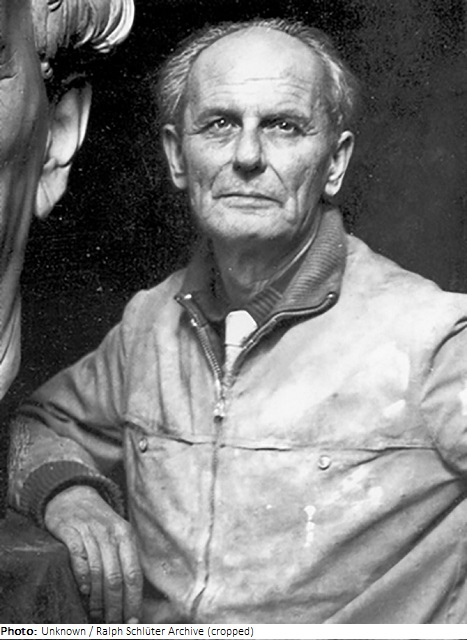Mario Moschi

Biographical information
| Roles | Competed in Olympic Games • Competed in Olympic Games (non-medal events) |
|---|---|
| Sex | Male |
| Full name | Mario•Moschi |
| Used name | Mario•Moschi |
| Born | 6 May 1896 in Lastra a Signa, Firenze (ITA) |
| Died | 26 May 1971 (aged 75 years 20 days) in Firenze, Firenze (ITA) |
| NOC |  Italy Italy |
Biography
Italian sculptor and medalist Mario Moschi received an Honorable Mention for his work Calciatore I (Soccer Player), Stop in corsa, at the 1936 Art Competitions in the category Sculpturing, Statues. This sculpture was designed in 1931 and cast in bronze in 1934/1936 and is now placed at the entrance of the Friedrich-Ludwig-Jahn-Sportpark in Berlin. According to the description in the General Lexicon of Artists, the monumental bronze sculpture combines “elements of futurism with an exaggerated realism, combines powerful body shapes with dynamic structures”. It was exhibited in Firenze in 1933 and in Venezia in 1934 and was bought by the city of Berlin after the Olympics. As early as 1937, it was erected at the “Lonely Poplar” ground, where football was played for the first time in Berlin. When a new stadium was built on the site for the socialist World Youth Games in 1951, it was re-erected. Another version of the sculpture was located near Stadio Giovanni Berta in Firenze, opened in 1931, possibly the plaster model, but it was obviously also sent to Berlin. This is also indicated by the creation times given in the catalog. A recent plaster copy of the Football Player was placed at the entrance of the Technical Center of the Italian Football Association (Coverciano) in Firenze and shown on an Italian stamp on the occasion of its inauguration.
It is not known which of Moschi’s medals were entered in 1936. He also exhibited a collection of medals in 1952, but it is unknown which medals were presented. Medals commemorating the construction of the Olympic Stadium in Roma in 1953 and the World Gymnastics Championships in Roma in 1954, for example, date from the beginning of the 1950s.
From 1910-15 Moschi attended the Academy of Fine Arts in Firenze. After World War I, during which he stayed in Nice producing caricatures for a newspaper, he returned to Firenze in 1923 and opened a studio designing coins as well as war memorials and other sculptures for public space. He then specialized in engraving medals, but also produced numerous decorative fountains for villas and squares. Later he increasingly took on the feeling for art of Fascism and taught sculpture in Lucca from 1941. After the war, Moschi received few orders because of his proximity to Fascism, but he was able to re-establish itself first in the USA and then also in Italy.
Results
| Games | Discipline (Sport) / Event | NOC / Team | Pos | Medal | As | |
|---|---|---|---|---|---|---|
| 1936 Summer Olympics | Art Competitions |  ITA ITA |
Mario Moschi | |||
| Sculpturing, Medals, Open (Olympic) | ||||||
| Sculpturing, Statues, Open (Olympic) | ||||||
| Sculpturing, Statues, Open (Olympic) | ||||||
| 1952 Summer Olympics | Art Competitions |  ITA ITA |
Mario Moschi | |||
| Sculpturing, Open (Olympic (non-medal)) |